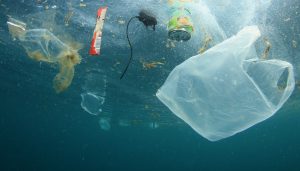Microplastics found near Everest’s peak, highest ever detected in the world
FOR ADVENTURERS THE world over, Mount Everest is an unforgettable sight—a regal plume of snow blows off its summit ridge as ice trails down its flank. But take a closer look at this stunning vista, as one team of climate scientists is doing, and you’ll start to notice the telltale signs of human impact from people both near and far.
Today, the surface of the ice at base camp in Nepal sits more than 150 feet lower than it did 35 years ago, the result of glacial melt from our steadily warming climate. Zones of high-altitude ice once thought safe from warming are now starting to dwindle. Even the snow itself isn’t quite so pristine. At 27,700 feet elevation, it is contaminated with microplastics—the highest yet found on the planet.
This is all according to a slew of new papers published this week in a special edition of the journal One Earth. The studies are part of a growing raft of research to emerge from an ambitious effort to study how climate change and other human actions are affecting Everest and the surrounding region, organized by the National Geographic Society and supported by Rolex as part of its Perpetual Planet Initiative.
Between April and June of last year, an interdisciplinary team of more than thirty scientists fanned out across Nepal’s Khumbu Valley, installing five weather stations and collecting hundreds of samples of rock, water, snow, ice, and more. The results laid out in this special issue underscore humans’ toll on the environment even at the planet’s highest points. (Read more about the science emerging from the 2019 Everest expedition.)
Although some of the discoveries, like the presence of microplastics, don’t pose an immediate environmental threat, others are much more worrisome. For one, even the world’s highest glaciers are losing ice at an accelerating rate. At risk are not only the local communities and vital mountain tourism industry they rely on, but also the millions downstream who depend on the glaciers for freshwater.
“It’s a real wake up call,” says Paul Mayewski, leader of the expedition and director of the Climate Change Institute at the University of Maine. “Despite the fact that the region is very high-elevation, it’s being impacted seriously.”



